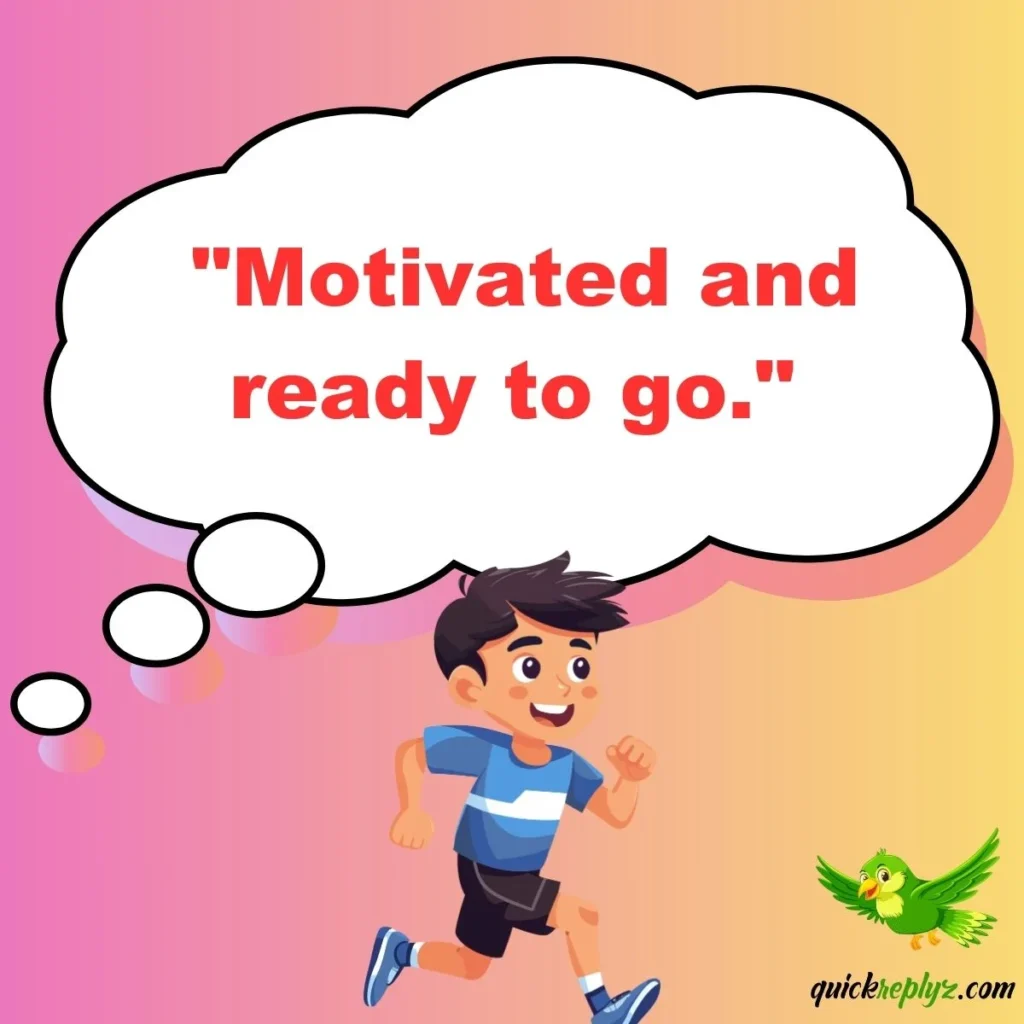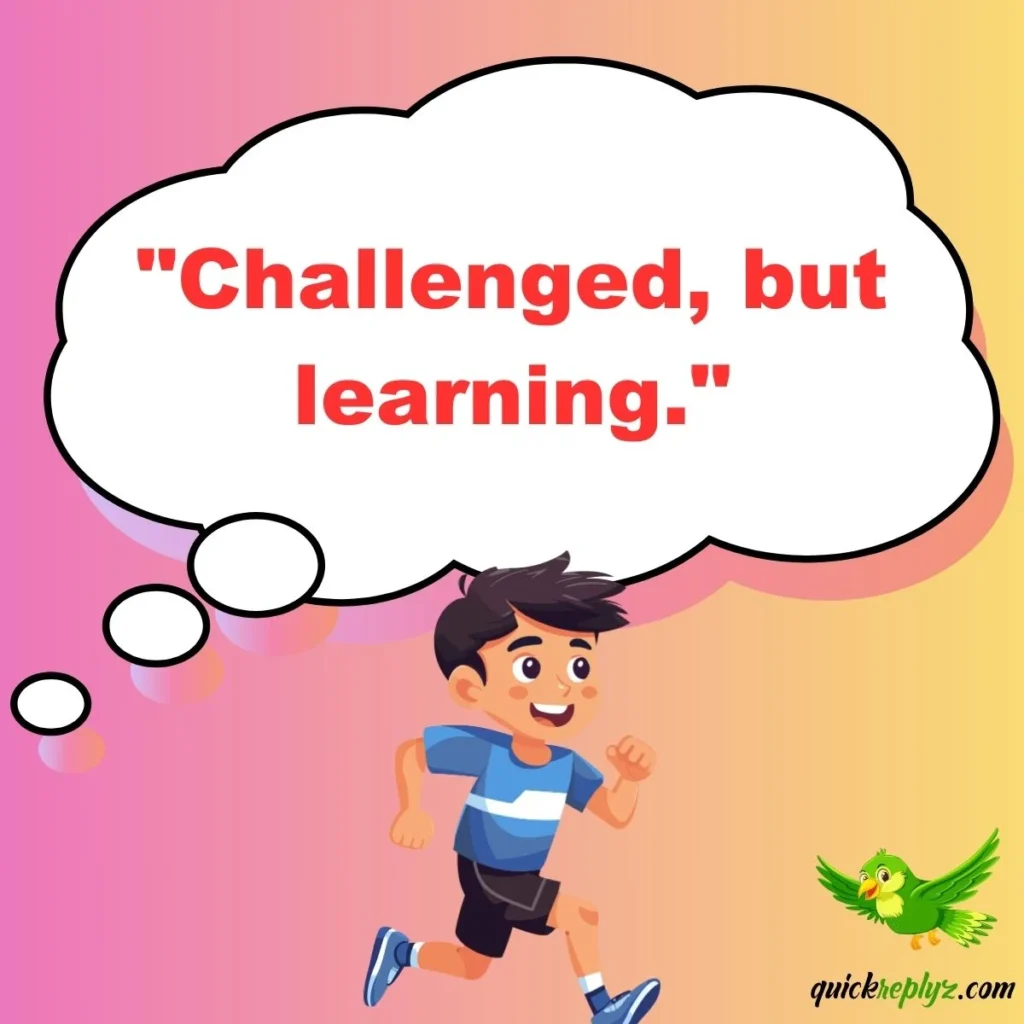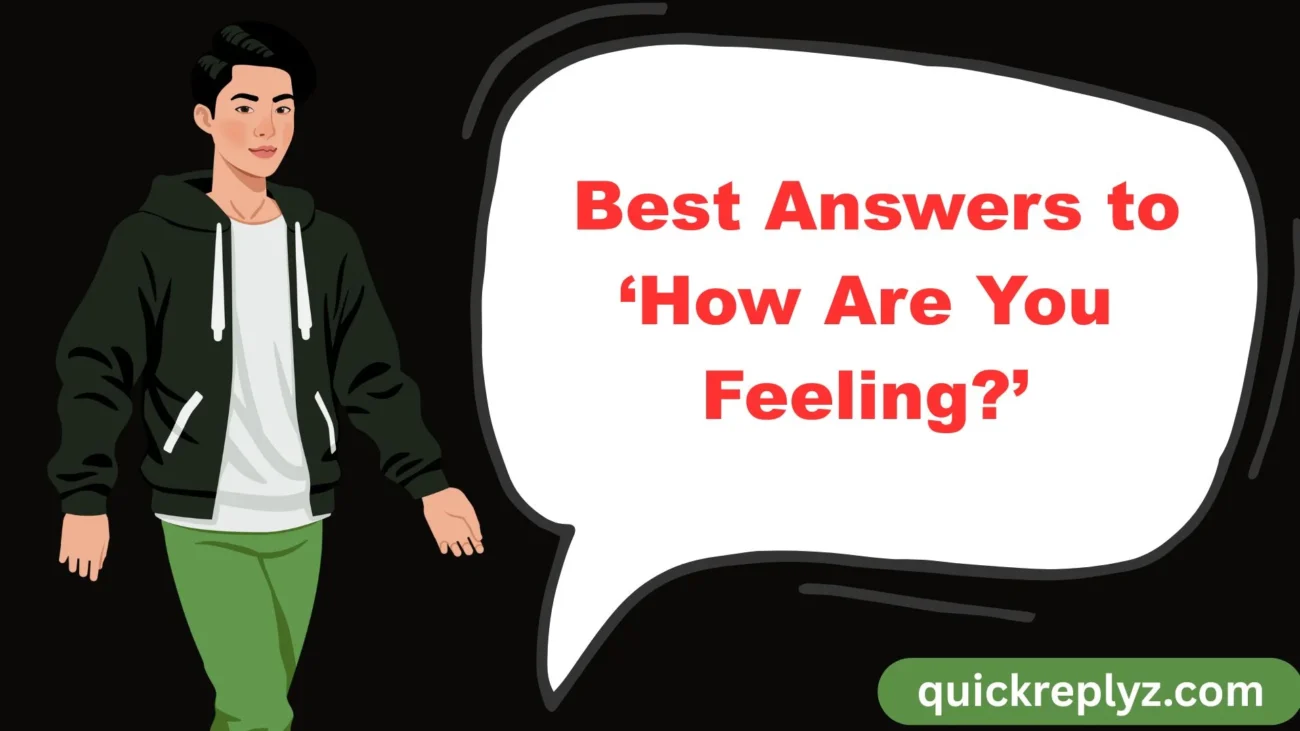When someone asks you “How are you feeling?”, it’s more than a casual check-in—it’s a chance to express yourself, connect, and even build stronger relationships. Giving thoughtful responses shows self-awareness, emotional intelligence, and personality. In this guide, we’ll share 30 best answers to ‘How are you feeling?’ with engaging story-style examples, NLP-friendly variations, and natural expressions that can help you in real conversations, whether casual, professional, or personal.
Another or Professional Way to Says ‘How Are You Feeling?’
- “A bit tired, but I’m managing.”
- “Excited about what’s coming next.”
- “Calm and at peace.”
- “Motivated and ready to go.”
- “A little stressed, but handling it.”
- “Hopeful about the future.”
- “Content and satisfied.”
- “Focused and determined.”
- “A little overwhelmed, but staying positive.”
- “Energetic and full of life.”
- “A bit anxious, but coping well.”
- “Proud of my progress.”
- “Relaxed and easygoing.”
- “Inspired and creative.”
- “Optimistic and cheerful.”
- “Reflective and thoughtful.”
- “Balanced and steady.”
- “Joyful and happy.”
- “Challenged, but learning.”
- “Peaceful and relaxed.”
- “Excited and motivated.”
- “Curious and open-minded.”
- “Calm after a storm.”
- “Positive and hopeful.”
- “Rested and refreshed.”
- “Playful and fun-loving.”
- “Confident and strong.”
- “Thankful and blessed.”
- “Still figuring it out.”
1. “I’m feeling grateful today.”
Sometimes life reminds us of the little blessings, like waking up healthy, having food, or being surrounded by good people. Sharing gratitude makes your response uplifting and spreads positivity. It shows that you’re mindful and focused on the good things.
Example: “I’m feeling grateful today. I had a wonderful morning with my family, and it set the tone for the rest of my day.”
Best Use: Use this answer in friendly, family, or workplace conversations to create a positive vibe.
2. “A bit tired, but I’m managing.”
We all have days when we push through responsibilities even while feeling drained. This answer reflects honesty and relatability while still showing resilience.
Example: “A bit tired, but I’m managing. It’s been a long day at work, but I’m keeping up with things.”
Best Use: Perfect in work, school, or daily life chats, where you want to be authentic without sounding negative.
3. “Excited about what’s coming next.”
Sometimes emotions aren’t about the present but about the anticipation of something meaningful. Sharing excitement makes the conversation engaging.
Example: “Excited about what’s coming next. I have an event tomorrow that I’ve been preparing for, and I can’t wait.”
Best Use: Ideal when you want to share plans, goals, or upcoming events with enthusiasm.
4. “Calm and at peace.”
Answering with serenity shows emotional stability. It reflects that you are grounded and content in the moment.
Example: “Calm and at peace. I took some time to meditate this morning, and it really helped me center myself.”
Best Use: Great for friends, mentors, or family members who appreciate emotional depth.
5. “Motivated and ready to go.”

On productive days, let your motivation shine. This makes you sound energetic and confident.
Example: “Motivated and ready to go. I set some clear goals today, and I’m excited to tackle them one by one.”
Best Use: Works best in professional or academic settings when you want to inspire others.
6. “A little stressed, but handling it.”
Stress is natural, but how you frame it matters. This response shows you’re dealing with challenges responsibly.
Example: “A little stressed, but handling it. Work deadlines are tough, but I’m keeping things under control.”
Best Use: Use in colleague or peer conversations where openness about workload helps build trust.
7. “Hopeful about the future.”
Optimism is always attractive in communication. Sharing hope inspires others to look forward too.
Example: “Hopeful about the future. I’ve been working on personal goals, and I feel like things are aligning well.”
Best Use: Best used in motivational talks or personal chats to radiate positivity.
8. “Content and satisfied.”
Sometimes the best feeling is being okay with what you have. Contentment reflects maturity.
Example: “Content and satisfied. I had a simple day, but it reminded me that happiness isn’t about big things—it’s about small moments.”
Best Use: Ideal for family or casual settings where heartfelt answers matter.
9. “Focused and determined.”
When you’re working on something important, let your drive show.
Example: “Focused and determined. I’m in the middle of preparing for an exam, and I’m channeling all my energy into it.”
Best Use: Best in academic or work-related conversations to show your dedication.
10. “A little overwhelmed, but staying positive.”
Balance honesty with optimism. This shows resilience and emotional intelligence.
Example: “A little overwhelmed, but staying positive. There’s a lot on my plate, but I know it will get done.”
Best Use: Useful in supportive environments where you want empathy without negativity.
11. “Energetic and full of life.”
Some days bring out your best energy. Expressing it spreads enthusiasm.
Example: “Energetic and full of life. I went for a morning jog, and it gave me such a boost.”
Best Use: Great for friendly or casual chats where you want to bring energy.
12. “A bit anxious, but coping well.”
Acknowledging anxiety while showing control demonstrates emotional strength.
Example: “A bit anxious, but coping well. I have an important meeting coming up, but I’m preparing myself.”
Best Use: Best in honest conversations with people who support you.
13. “Proud of my progress.”
Sometimes the best answer reflects self-growth. Pride in achievements motivates others too.
Example: “Proud of my progress. I’ve been working hard on self-discipline, and I can see the results.”
Best Use: Ideal for mentors, coaches, or friends who encourage your growth.
14. “Relaxed and easygoing.”
Simple and stress-free answers keep conversations light.
Example: “Relaxed and easygoing. I spent my day watching my favorite shows and recharging.”
Best Use: Perfect for weekend or casual chats.
15. “Inspired and creative.”
Creativity often sparks joy, and sharing it invites curiosity.
Example: “Inspired and creative. I just started sketching again, and it feels amazing to create something new.”
Best Use: Works best in personal or artistic circles.
16. “Optimistic and cheerful.”
Spreading cheer makes your presence enjoyable.
Example: “Optimistic and cheerful. I’m seeing the brighter side of things today, and it feels good.”
Best Use: Great for friends, co-workers, or social settings.
17. “Reflective and thoughtful.”
Sometimes your mood is more inward. Expressing reflection shows maturity.
Example: “Reflective and thoughtful. I’ve been journaling lately, and it’s helping me understand myself better.”
Best Use: Perfect in deep conversations with close friends.
18. “Balanced and steady.”
Showing stability reflects reliability and calmness.
Example: “Balanced and steady. My day wasn’t too busy, and I managed to keep things under control.”
Best Use: Good for professional or family discussions.
19. “Joyful and happy.”
When you feel lighthearted, let it show.
Example: “Joyful and happy. I spent quality time with my loved ones, and it really lifted my mood.”
Best Use: Best in social or personal moments where happiness is contagious.
20. “Challenged, but learning.”

Turning challenges into growth opportunities shows resilience.
Example: “Challenged, but learning. My project has been tough, but I’m gaining new skills every day.”
Best Use: Great for workplace or academic conversations.
21. “Peaceful and relaxed.”
Sharing calmness makes interactions soothing.
Example: “Peaceful and relaxed. I spent my evening listening to soft music, and it made me feel so good.”
Best Use: Works in casual or family chats.
22. “Excited and motivated.”
Doubling up emotions makes the reply vibrant.
Example: “Excited and motivated. I’m starting a new chapter in my life, and I’m thrilled about it.”
Best Use: Perfect in goal-oriented or positive chats.
23. “Curious and open-minded.”
Reflecting curiosity sparks deeper discussions.
Example: “Curious and open-minded. I’ve been exploring new books, and it’s expanding my perspective.”
Best Use: Great in intellectual or creative conversations.
24. “Calm after a storm.”
This shows resilience after a challenge.
Example: “Calm after a storm. I had a tough week, but things are finally settling down.”
Best Use: Ideal for personal or supportive environments.
Also Read This : 30 Best Ways to Politely Ask Someone if They Still Want To Be Friends
25. “Positive and hopeful.”
A timeless, uplifting answer.
Example: “Positive and hopeful. Even though things are tough, I’m choosing to focus on solutions.”
Best Use: Perfect in motivational or encouraging settings.
26. “Rested and refreshed.”
After rest, your mood shines brighter.
Example: “Rested and refreshed. I took a proper break, and it made a world of difference.”
Best Use: Best in morning chats or after vacations.
27. “Playful and fun-loving.”
Bringing playfulness adds charm.
Example: “Playful and fun-loving. I’m just in a light mood, enjoying simple things like jokes and laughter.”
Best Use: Great in friendship or social conversations.
28. “Confident and strong.”
Confidence speaks volumes in any setting.
Example: “Confident and strong. I faced a challenge today, and I handled it better than I expected.”
Best Use: Ideal for work, interviews, or leadership talks.
29. “Thankful and blessed.”
A humble yet warm response.
Example: “Thankful and blessed. I’m surrounded by good people, and that means everything to me.”
Best Use: Best in family, spiritual, or community conversations.
30. “Still figuring it out.”
Honesty is powerful, especially when you’re uncertain.
Example: “Still figuring it out. Life feels a bit unclear right now, but I’m learning along the way.”
Best Use: Perfect for close friends or supportive settings where honesty matters.
Conclusion
Answering “How are you feeling?” is more than small talk—it’s an opportunity to show authenticity, positivity, and emotional awareness. Whether you choose to respond with gratitude, honesty, excitement, or reflection, your words can inspire deeper connections. Use these 30 best answers to ‘How are you feeling?’ to make your conversations meaningful and engaging.
FAQs
Q1. Why should I give thoughtful answers to “How are you feeling?”
Because it helps build stronger connections and shows emotional intelligence.
Q2. Which answer works best in professional settings?
Responses like “Motivated and ready to go” or “Focused and determined” are best in workplaces.
Q3. What if I don’t feel great but don’t want to sound negative?
Say something like “A little stressed, but handling it”—honest yet positive.
Q4. How can these answers help me socially?
They make conversations more engaging, leaving a lasting impression.
Q5. Are these answers suitable for text conversations?
Yes, they work perfectly in both face-to-face and texting scenarios.

